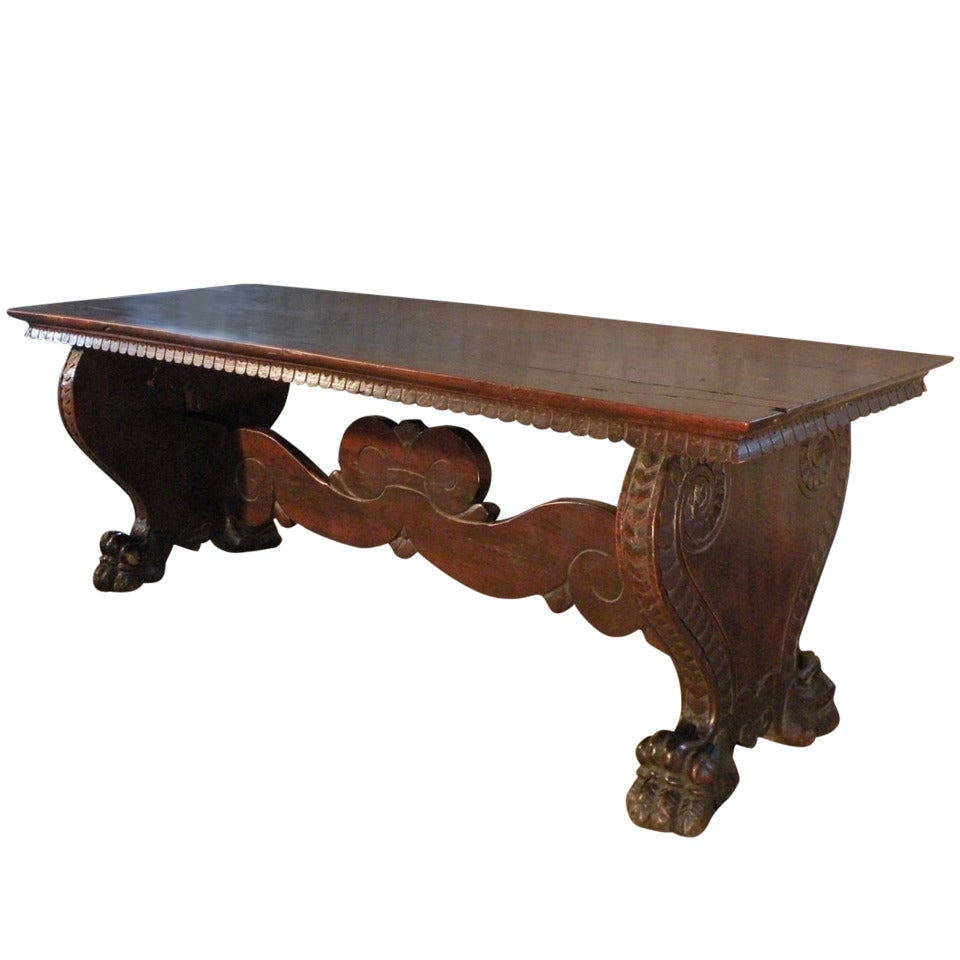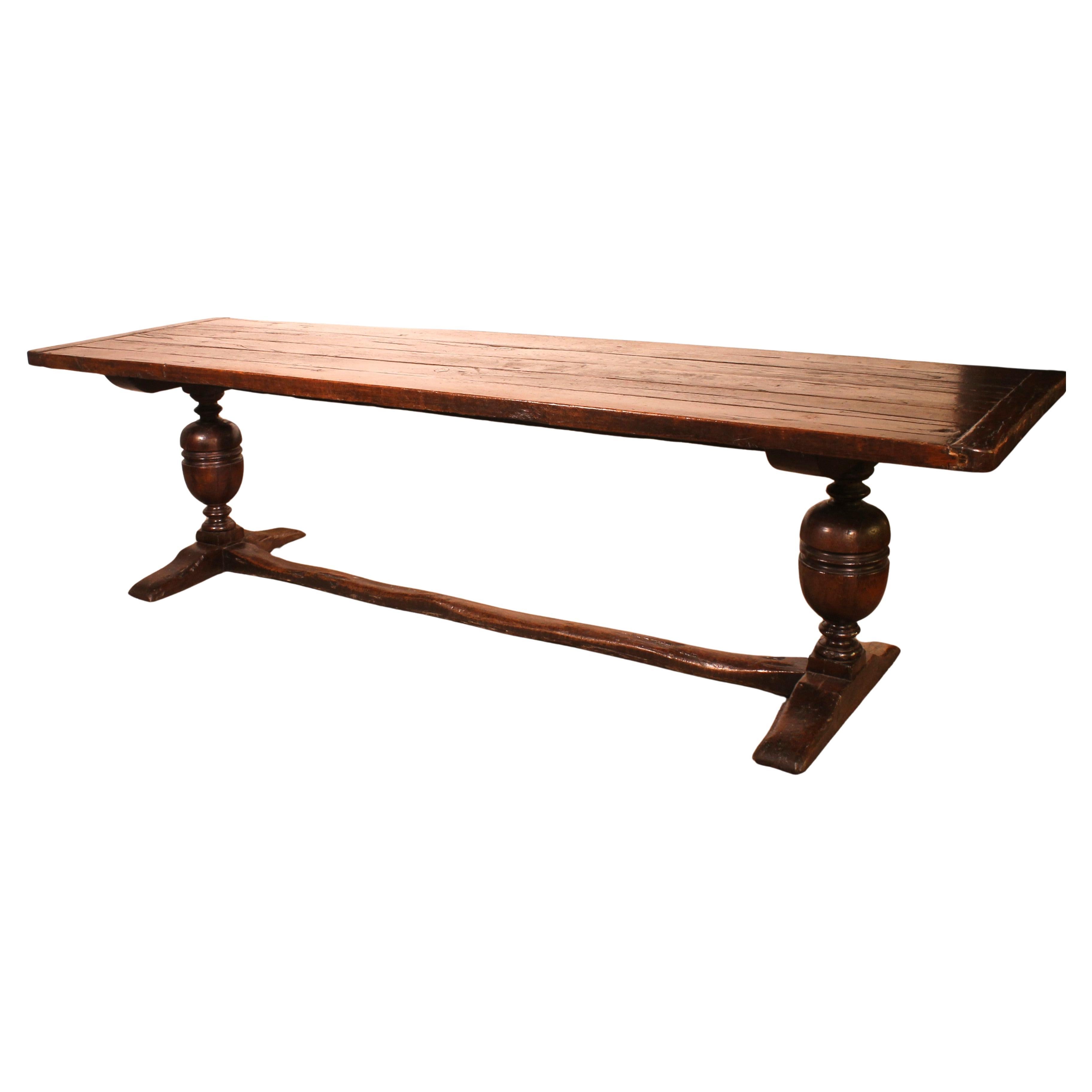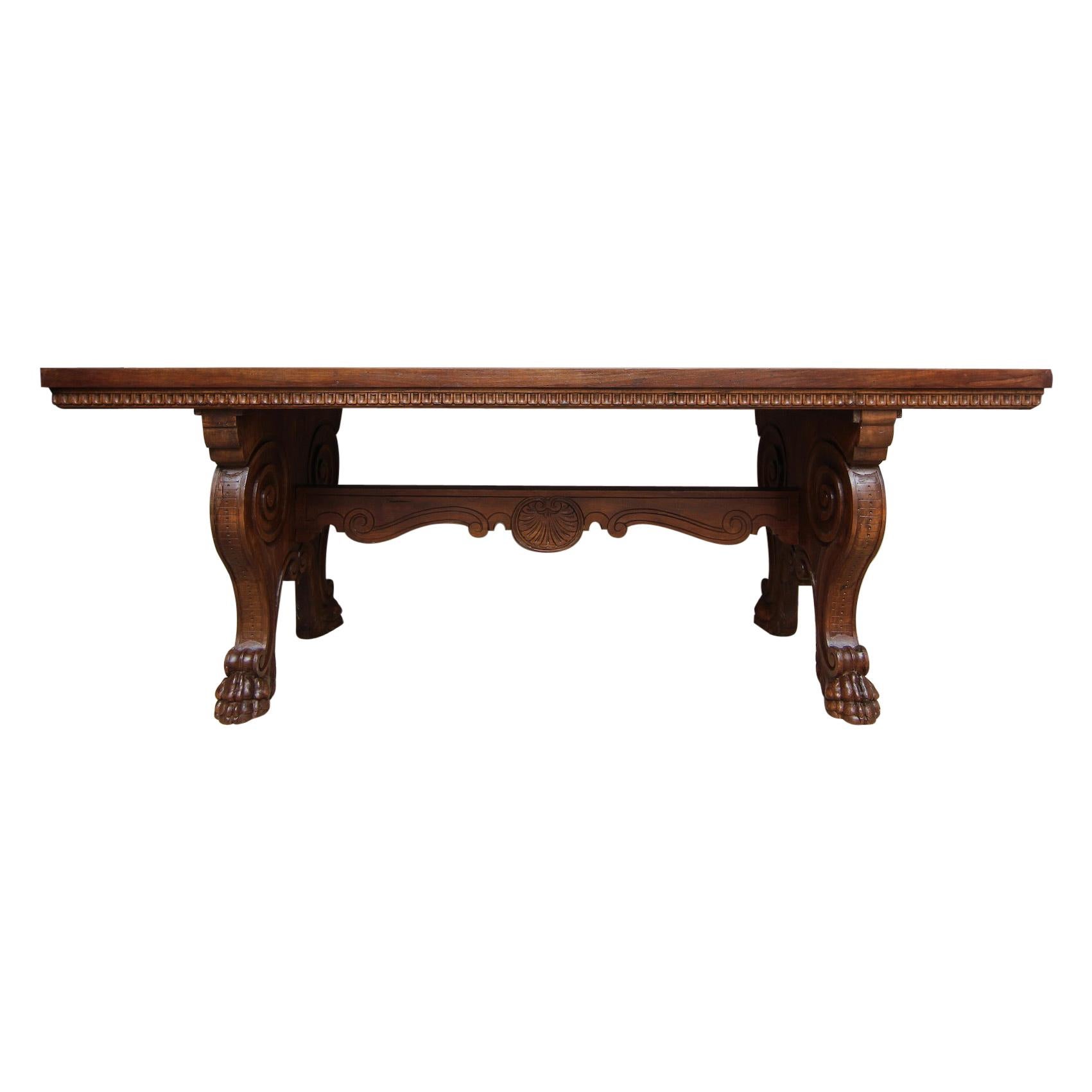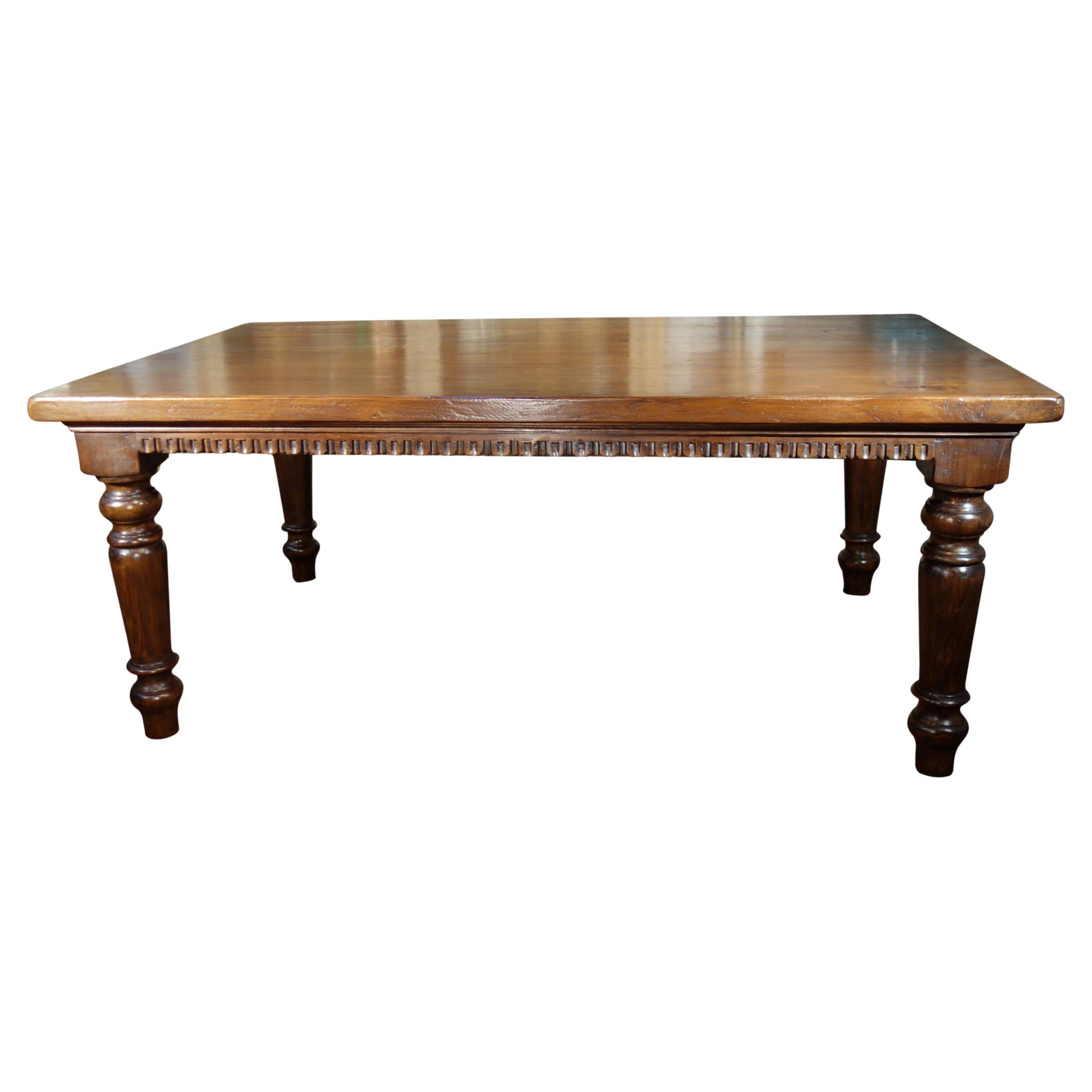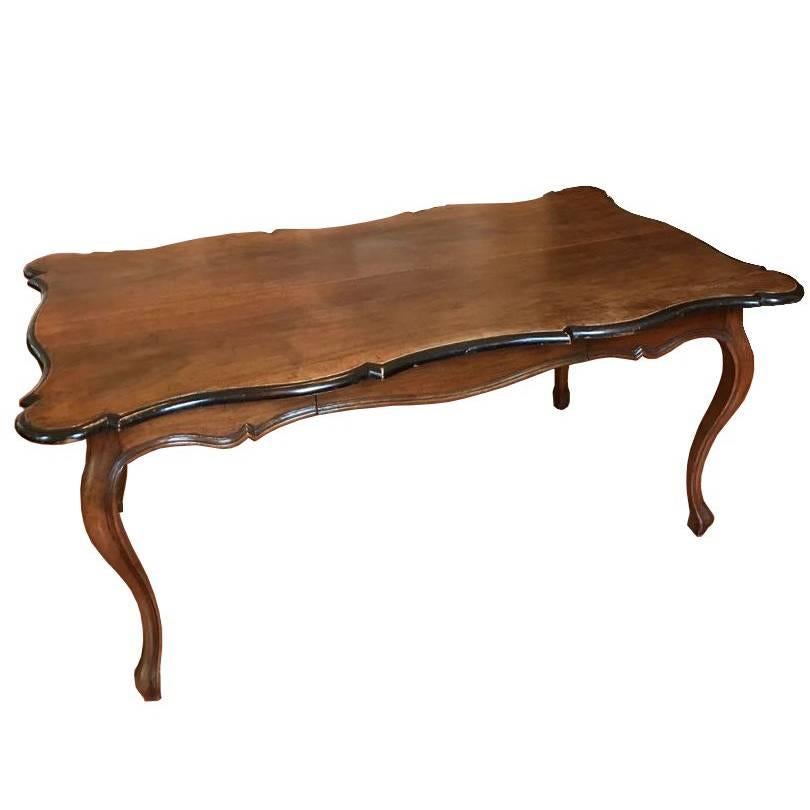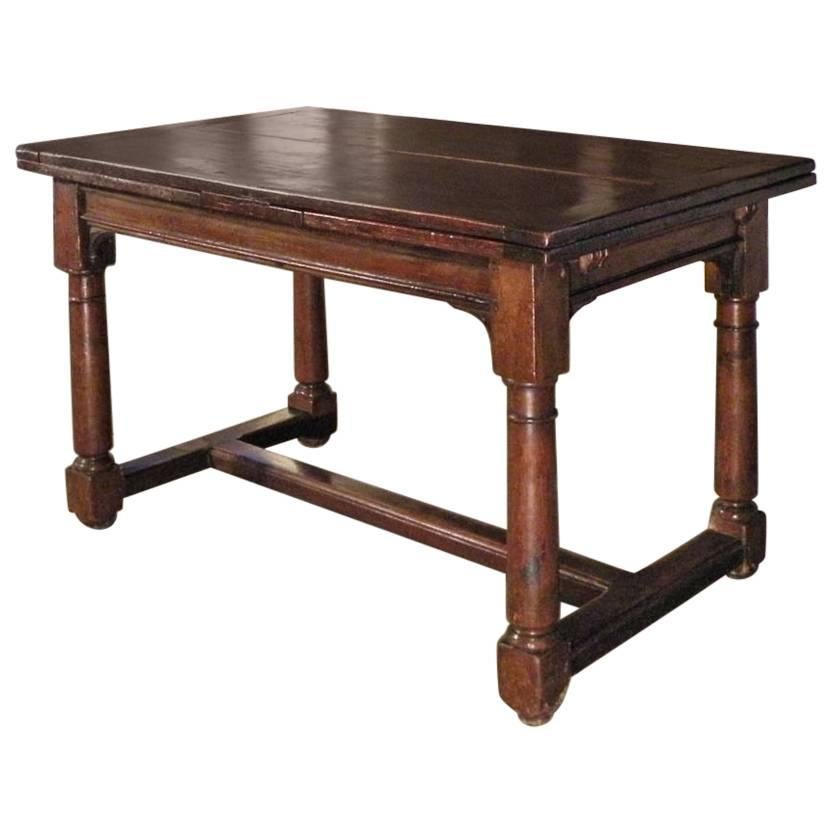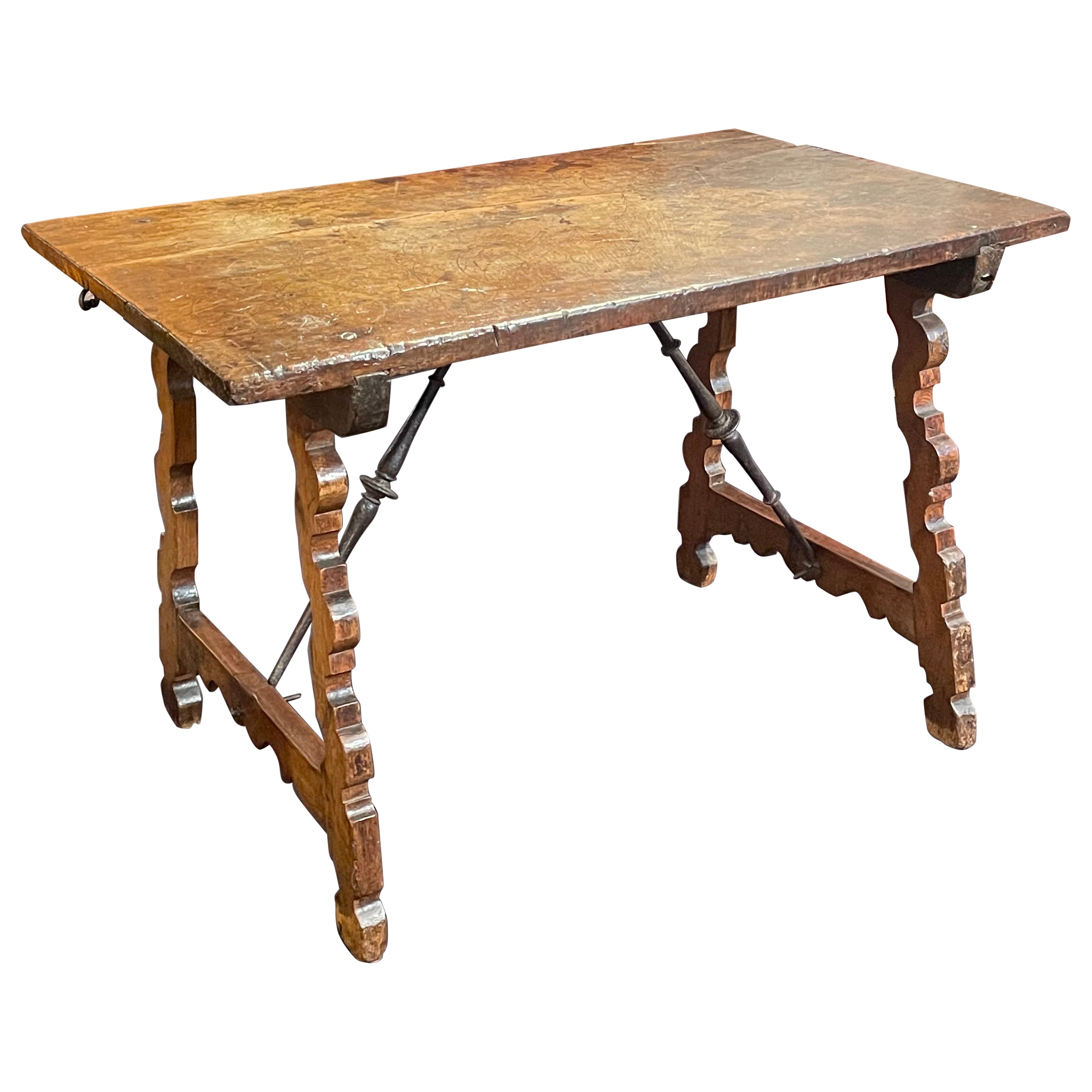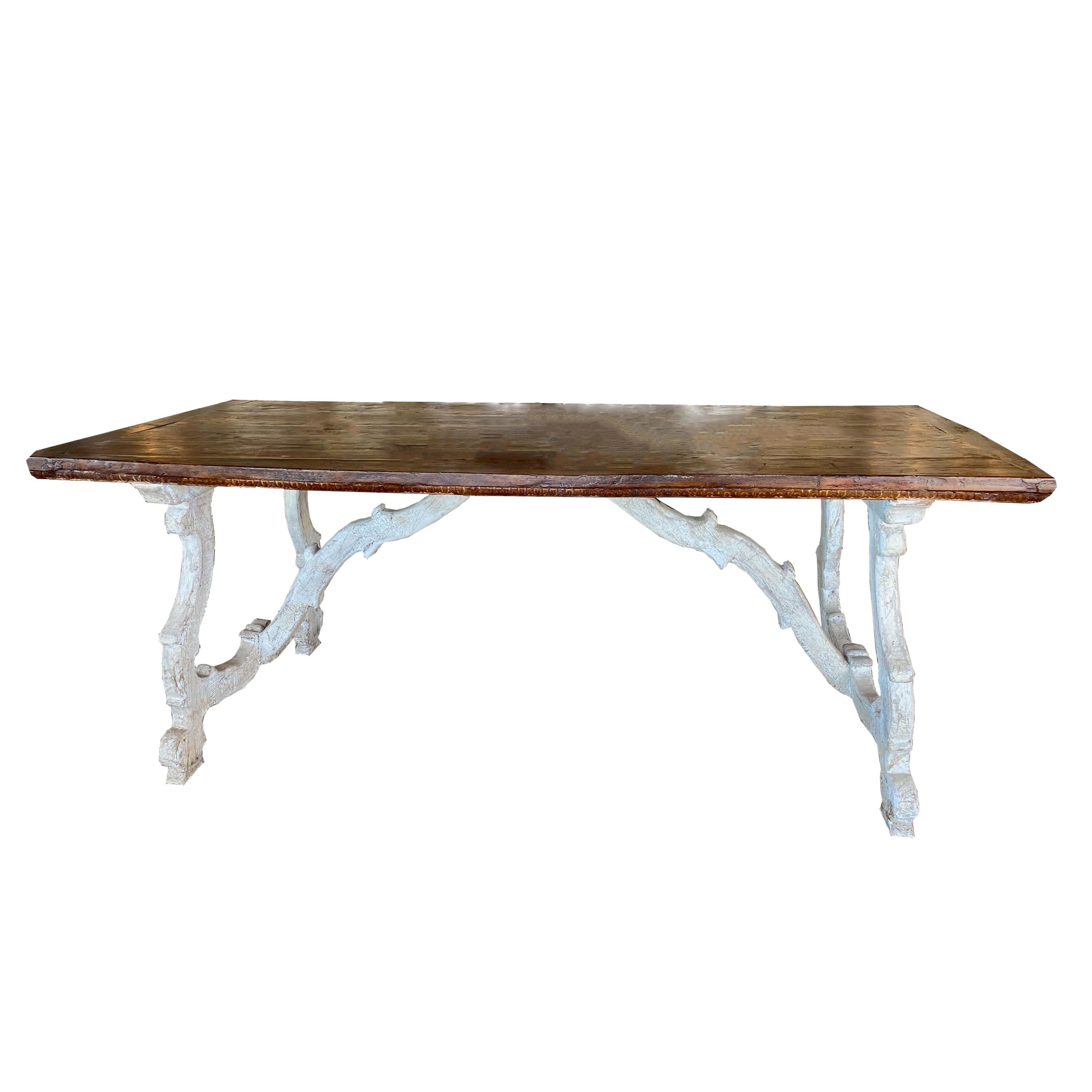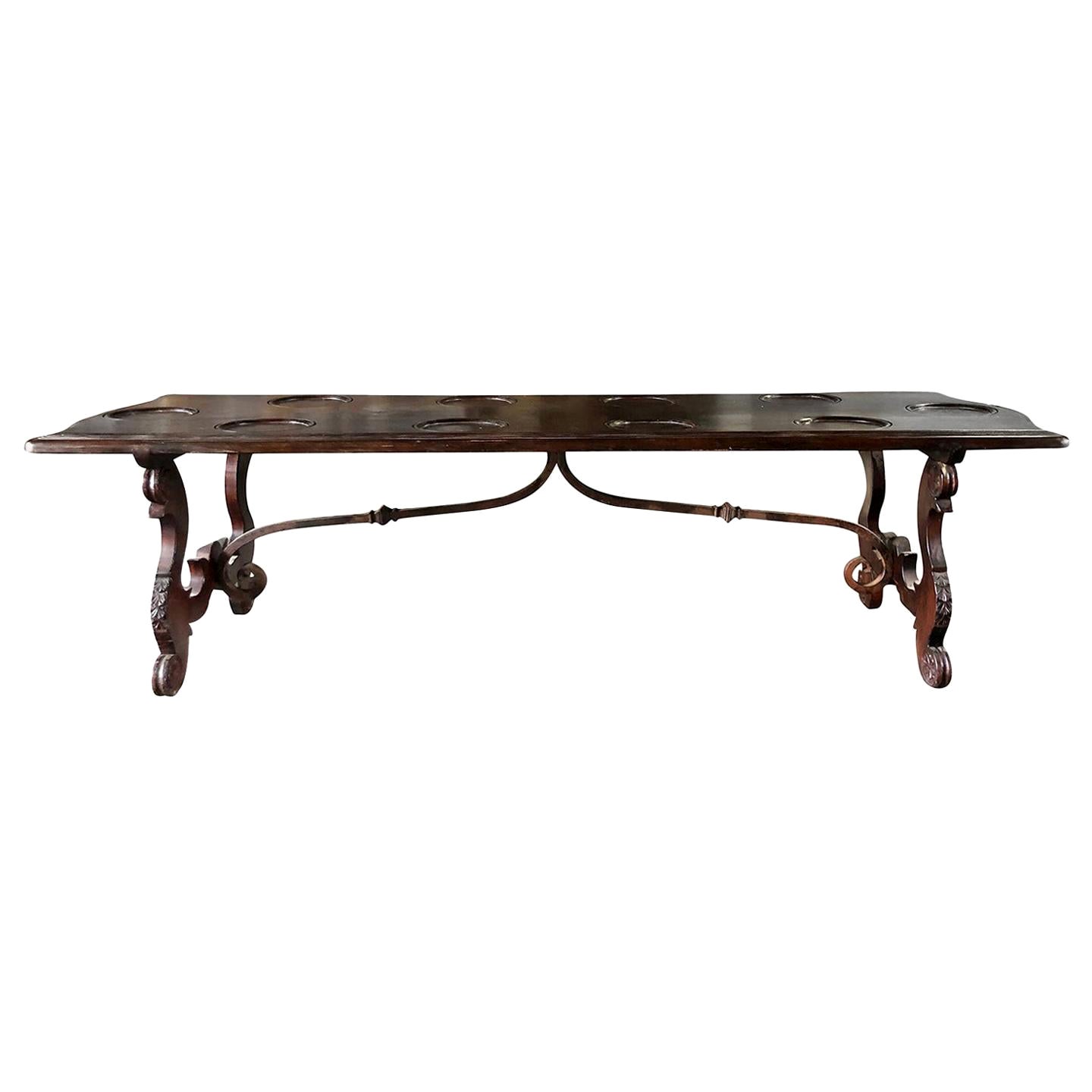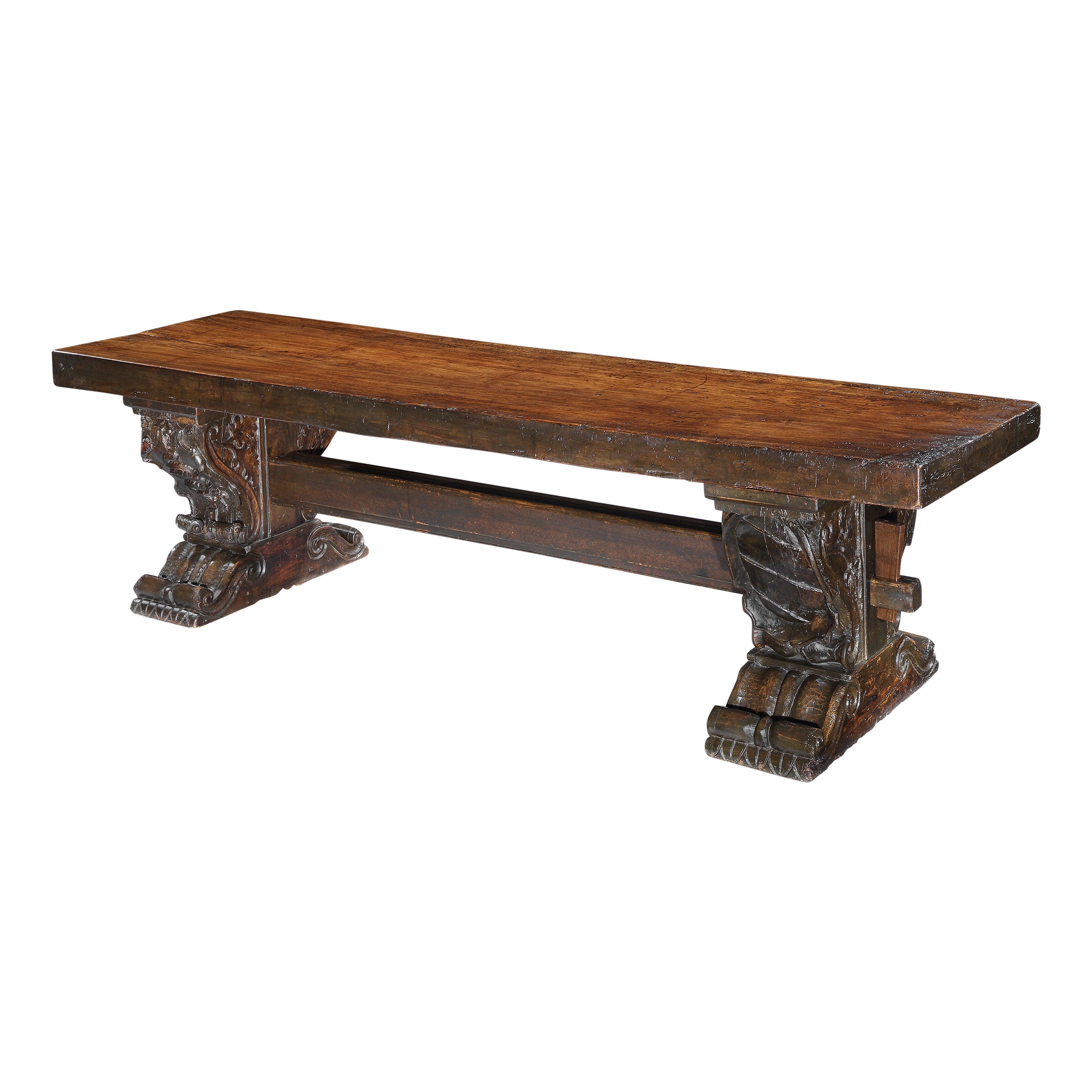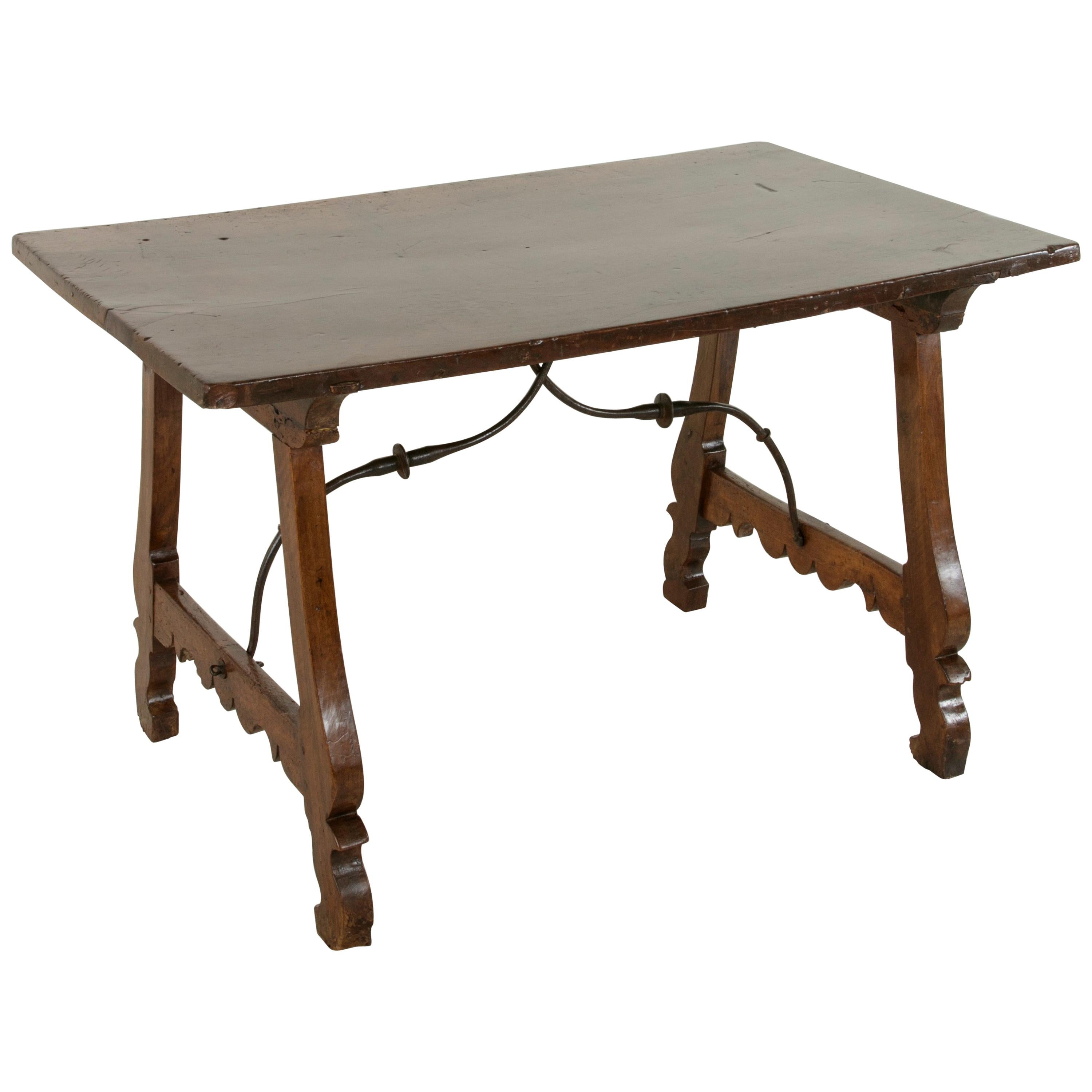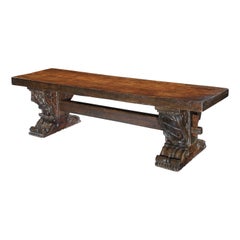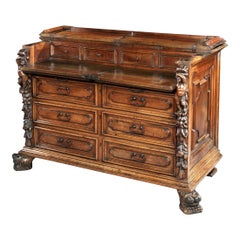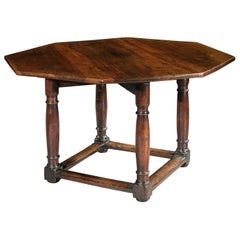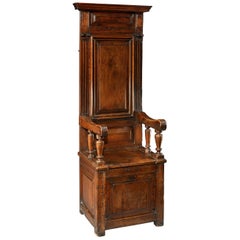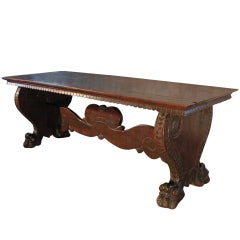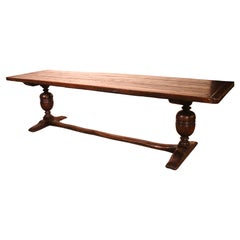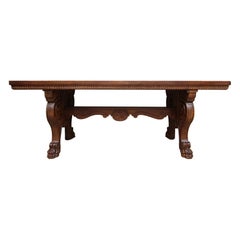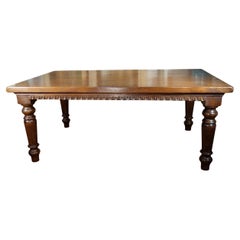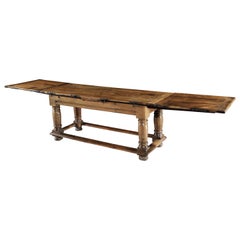
Table, Drawleaf, 18-Seat, 16th Century, Italian, Renaissance, Walnut, Iron
View Similar Items
Want more images or videos?
Request additional images or videos from the seller
1 of 8
Table, Drawleaf, 18-Seat, 16th Century, Italian, Renaissance, Walnut, Iron
About the Item
- Dimensions:Height: 32.68 in (83 cm)Width: 74.02 in (188 cm)Depth: 29.14 in (74 cm)
- Style:Renaissance (Of the Period)
- Materials and Techniques:Walnut,Metalwork
- Place of Origin:
- Period:
- Date of Manufacture:1580-1620
- Condition:Wear consistent with age and use.
- Seller Location:BUNGAY, GB
- Reference Number:1stDibs: LU3867315799092
About the Seller
5.0
Vetted Professional Seller
Every seller passes strict standards for authenticity and reliability
Established in 1985
1stDibs seller since 2018
97 sales on 1stDibs
Typical response time: 7 hours
Authenticity Guarantee
In the unlikely event there’s an issue with an item’s authenticity, contact us within 1 year for a full refund. DetailsMoney-Back Guarantee
If your item is not as described, is damaged in transit, or does not arrive, contact us within 7 days for a full refund. Details24-Hour Cancellation
You have a 24-hour grace period in which to reconsider your purchase, with no questions asked.Vetted Professional Sellers
Our world-class sellers must adhere to strict standards for service and quality, maintaining the integrity of our listings.Price-Match Guarantee
If you find that a seller listed the same item for a lower price elsewhere, we’ll match it.Trusted Global Delivery
Our best-in-class carrier network provides specialized shipping options worldwide, including custom delivery.More From This Seller
View AllMonastery Trestle Table One Plank Walnut Biscione Milan Armorial 14-16 seat 10ft
Located in BUNGAY, SUFFOLK
A massive, 14-16 seater, antiquarian, milanese, renaissance-revival, monastery, trestle table with 10ft long, 4 ¼” thick, single plank walnut top & oak trestl...
Category
Antique 18th Century Italian Renaissance Revival Dining Room Tables
Materials
Oak, Walnut
Cassettone or Bureau-Chest, Late 16th Century, Italian Renaissance, Walnut
Located in BUNGAY, SUFFOLK
Exceptional museum quality, Italian, renaissance walnut cassettone with fitted bureau in the upper part & exceptional Bambocci carving, Lombardy.
This magnificent cassettone exudes the character and quality of the finest, late-Renaissance furniture. Late 16th century, Northern Italian furniture often had the sides, legs or angles, 'a Bambocci', incorporating carved figures which were unique sculptures in their own right. The putti on this cassettone are beautifully carved and of sculptural quality. Each angel has one arm raised to heaven, a poignant touch. Showing customary signs of wear from time, the lion’s paw feet make a great statement. This cassettone was conceived to have visual impact through the quality of the carving, as well as being very practical with the writing compartment fitted in the top part. It has survived in very original condition with a few small repairs and losses, and the color and patina are warm and lustrous. This cassettone was illustrated in one of the seminal works on Lombardy furniture in the 1969 and has been in two renowned collections.
The hinged top in two sections faced with a solid moulded edge. The front part has a fall front and opens to reveal a writing compartment. The fall front retains its original lock and is concealed with a false drawer which is above three drawers. All with moulded panels, escutcheons and retaining the original iron handles. The front ends have exceptional, bambocci, carved putti raising their arms to heaven above trailing foliage. Standing on magnificent lion...
Category
Antique 16th Century Italian Baroque Furniture
Materials
Walnut
Table, Centre, Dining, Writing, Walnut, Octagonal, French, Renaissance
Located in BUNGAY, SUFFOLK
- This table is a rare and attractive octagonal form with characteristic Renaissance legs.
- It can serve as centre, dining or writing table.
- The...
Category
Antique 1620s French Renaissance Center Tables
Materials
Walnut
Cathedra or Throne Chair, Late 16th Century, French Second Renaissance, Walnut
Located in BUNGAY, SUFFOLK
A moulded cornice sits above the high, panelled back with fluting and applied roundels. The later, metal pin on the left edge releases the central, moulded panel in the back which retains its original hinges. When the pin is removed the panel can be lowered, revealing a large area behind. The scroll arms are supported by tapering turnings which can be compared with mid-16th century benches of the nave such as those in the churches in Gerberoy and Coivrel which are in Oise, the Piccardie region of Frances.
The panelled, box seat has later 18th century hinges...
Category
Antique 16th Century French Renaissance Armchairs
Materials
Walnut
Table, 18th Century, Italian, Baroque, Walnut, Narrow, One Piece Top
Located in BUNGAY, SUFFOLK
A rare, narrow, Italian, baroque, walnut, cabinet or sidetable.
This table has unusual, narrow proportions and was probably originally conceived as a stand for a table cabinet or ...
Category
Antique Early 18th Century Italian Baroque Center Tables
Materials
Walnut
Pair of Walnut Armchairs, Late 16th Century, French Renaissance, with Ram Mask C
Located in BUNGAY, SUFFOLK
"This rare pair of upholstered open armchairs relate to examples in museum collections in France, the USA and the UK. Few pieces of Renaissance furniture featuring ram’s head motif arm terminals survive as the chairs would have been in the ownership of the elite symbolising leadership and authority. The condition of these armchairs reflects their age and use and they have a rich colour and lustrous patina.
The form of these chairs is characteristic of a stereotypical Renaissance model. The upholstered section of the backs are upholstered in wool with applied 17th century floral needlework faced with gilded studs and supported by square section uprights. The channelled tablet and stylised rosette incised curved arms terminate in acanthus capped carved rams' masks and are supported by column turned uprights headed by an entrelac collar. The ram is a symbol of leadership and authority and it also determination, action, initiative, and Aries, the first sign of the Zodiac. The seats are upholstered in wool with applied 17th century needlework faced with gilded studs and supported by tapering column/ring turned front legs and square section back legs. Some of the stretchers with moulded detailing. Standing on front ball feet. Exceptional original colour and patina. Henri II 1550-60.
Condition: The chairs are both sturdy with exceptional colour and patina. One armchair with a splice on the rhs back leg and replaced but period front and lhs stretcher both bearing old nail marks, two other replaced stretchers and the back uprights bearing old nail marks indicating that they were upholstered at some point. The other armchair with an old repair to a break in the right back leg and an old patch near the end of the leg, replaced but period back and lhs stretcher, small patch to bottom of lhs arm where it meets the support. Old worm marks and some losses. Considering the age of the armchairs, these repairs and replacements are not unusual and consistent with the repairs on the related armchairs in museum collections. They suggest that the chairs either fell backwards at some point or someone leant back while sitting in them.
Back Height 107cm, 42in, Seat Height 59.5cm, 23½in
Width 60cm, 23½ in, Seat 59cm, 23¼in
Depth including arm 59cm, 23¼in, Seat 49cm, 19¼in
Provenance: Deaccessioned by The National Galleries of Scotland
Bearing an old transport label from Alain Moatti (French architect) to Mrs Katz, London
Literature: Related to :
There are comparable armchairs in international museum collections dated to the second half of the 16th century. Most share the following characteristics with the above pair, the form, the ram's mask carved to the end of each arm, the curvilinear outline of the arm rests, the ring turned front legs as well as the plain square section back legs and plain stretchers.
1. Two stained glass windows...
Category
Antique 16th Century French Renaissance Armchairs
Materials
Walnut
You May Also Like
Italian 16th century Renaissance Walnut Trestle Table
Located in Troy, NY
Attractive, rare Renaissance trestle table of typical, bold design and beautiful rich color.
Provenance: Metropolitan Museum of Art, NYC.
Category
Antique 16th Century Italian Renaissance Dining Room Tables
Materials
Walnut
Price Upon Request
Renaissance Monastery Table - 16th Century
Located in Brussels, Brussels
Superb and rare Renaissance period oak monastery table from the Flanders
Unique museum quality table with a superb top that has an extraordinary patina. Its 5cm thick top gives it a...
Category
Antique 16th Century Belgian Renaissance Dining Room Tables
Materials
Oak
19th Century Italian Renaissance Revival Writing Desk Made of Walnut
Located in Dusseldorf, DE
A 19th century Italian writing desk in renaissance revival style made of solid walnut.
The table can be used as a writing desk or as a dining table. Both sides look the same.
...
Category
Antique 19th Century Italian Renaissance Revival Desks and Writing Tables
Materials
Walnut
19th C Style Solid Italian TORINO Walnut Table Renaissance Dentil custom size
Located in Encinitas, CA
Our exclusive “TORINO” carved leg table with Renaissance style dentilated detail on the apron and authentic Renaissance style finish - The Italian Art...
Category
2010s Italian Baroque Revival Dining Room Tables
Materials
Walnut
$10,900 Sale Price / item
31% Off
Italy 18th Century Baroque Walnut Organic Shape Table Desk
Located in Brescia, IT
This walnut rectangular Tuscany table, has been hand made in Lucca (Tuscany, Italy) in 1760 circa.
Its elegant shape, with the black border, makes this ...
Category
Antique Mid-18th Century Italian Baroque Dining Room Tables
Materials
Walnut
$12,852 Sale Price
20% Off
French late 16th Century Henry II Walnut Extending Table
Located in Troy, NY
Henry II period draw-leaf table of simple linear design. and with centuries of care and use to give it warmth and personality. The top with extending leaves on both ends supported by...
Category
Antique 16th Century French Renaissance Dining Room Tables
Materials
Walnut
